The Resonance Key (Left-Hand Pinky)
The resonance key is the upper key on the long joint and is pressed with the left-hand pinky. When pressed, this key opens a large tone-hole on the long joint and is used to adjust the timbre and tuning of certain notes.
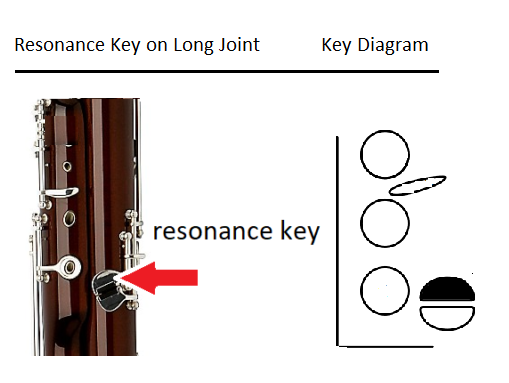
Middle Eb
Middle E-flat (Eb) has a fun fingering. It’s called a “forked” fingering because the left middle finger is up, but the left ring finger is down. This can be tricky to coordinate, and you’ll need to work on getting your fingers to move independently from each other.
This Eb has several possible fingerings but only two of them sound good and have stable intonation. You can avoid a lot of trouble with middle Eb if you use one of the two reliable fingerings shown below. The only difference between the two fingerings is in the right hand. The fingering on the left uses the middle finger and is a little higher in pitch; the second uses the index finger and is a little lower in pitch.
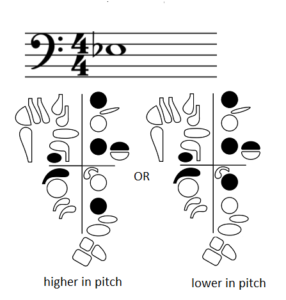
Matching Pitch on Eb
Play this trying both fingerings to see which one makes it easiest to play the Eb in tune with the reference tone.

Troubleshooting Intonation:
If you are using your AIR & EAR but aren’t completely in tune with either of the suggested fingerings, try playing middle Eb without the resonance key (left pinky). Most instruments need the resonance key down to be in tune on middle Eb, but not all.
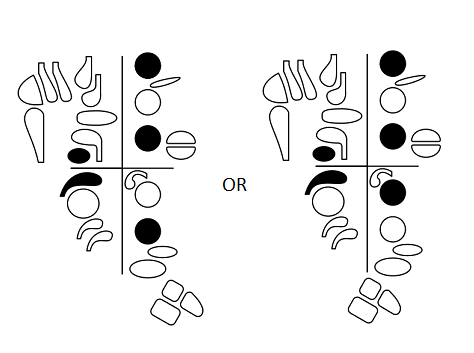
Note: Middle Eb will need a good amount of practice before it feels easy. The finger coordination is a challenge because some fingers will be lifting while others are going down. The next exercise, Practice Patterns, provides options for practicing various note combinations that include middle Eb. These patterns can be transposed to address any tricky combination of notes. You can make them more challenging by adding articulations and dotted rhythms.
Practice Patterns





Eb Neighbors
This exercise uses the finger combinations you’ve just practiced.

Eb is the Key
- A lot of fingers have to move when playing from middle Eb to middle F. You need to lift everything except the whisper key.
- Play through the exercise slowly to identify the tricky note combinations (probably Eb to F, Eb to D, and C to Eb).
- Use the isolate and repeat practice technique on each pair of notes before playing through the exercise again.
- Observe the slurs in bars 7, 8, and 13.
In bar 7 you will articulate all but the last two pitches (the F eighth and E quarter).
In bar 8 you will articulate all notes except for the D eighth notes on the “and” of beats 1 and 3.
In bar 13 you will articulate all notes except for the D eighth notes on the “and” of beats 1 and 3.
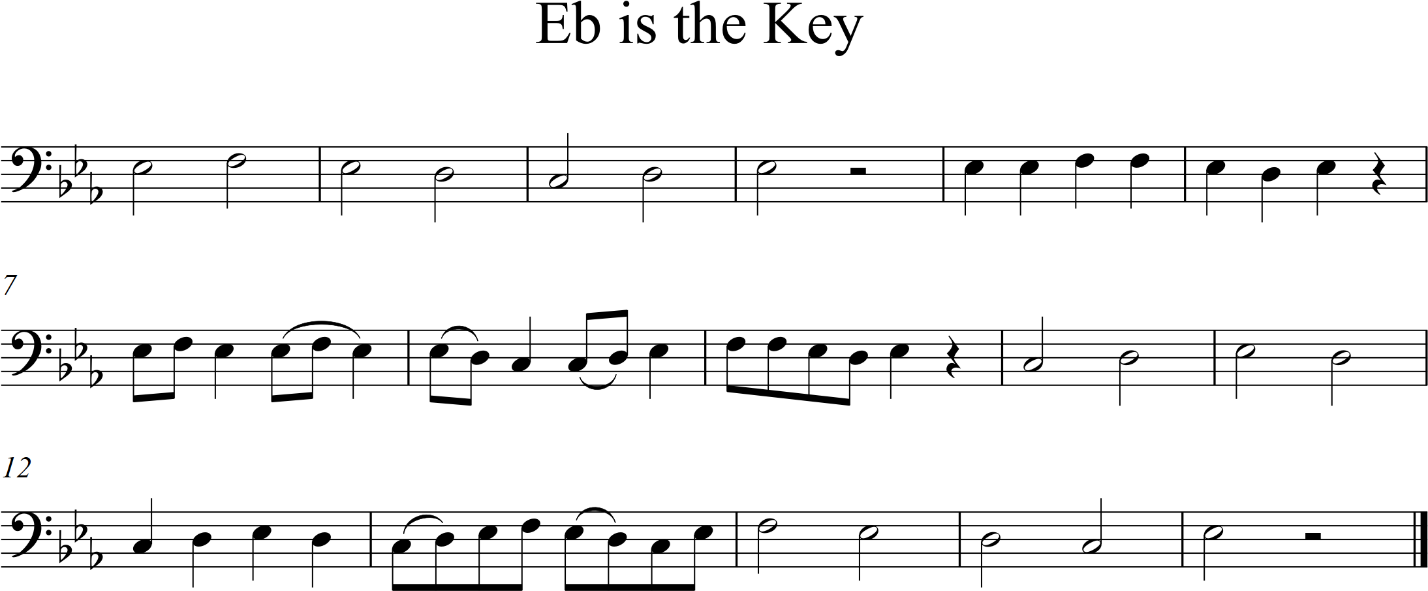
The Water is Wide
This piece is presented as a duet. The top part is the melody, and the bottom part is the accompaniment. Play this with your teacher or with another student bassoonist. You can even play a duet with yourself by recording one of the parts and playing the other part along with your recording.
Be sure to count and keep a steady tempo. The suggested tempo is quarter note = 96 but practice at a slower tempo until your fingers are comfortable with the notes and you can sing your part easily and accurately in your head while you play.
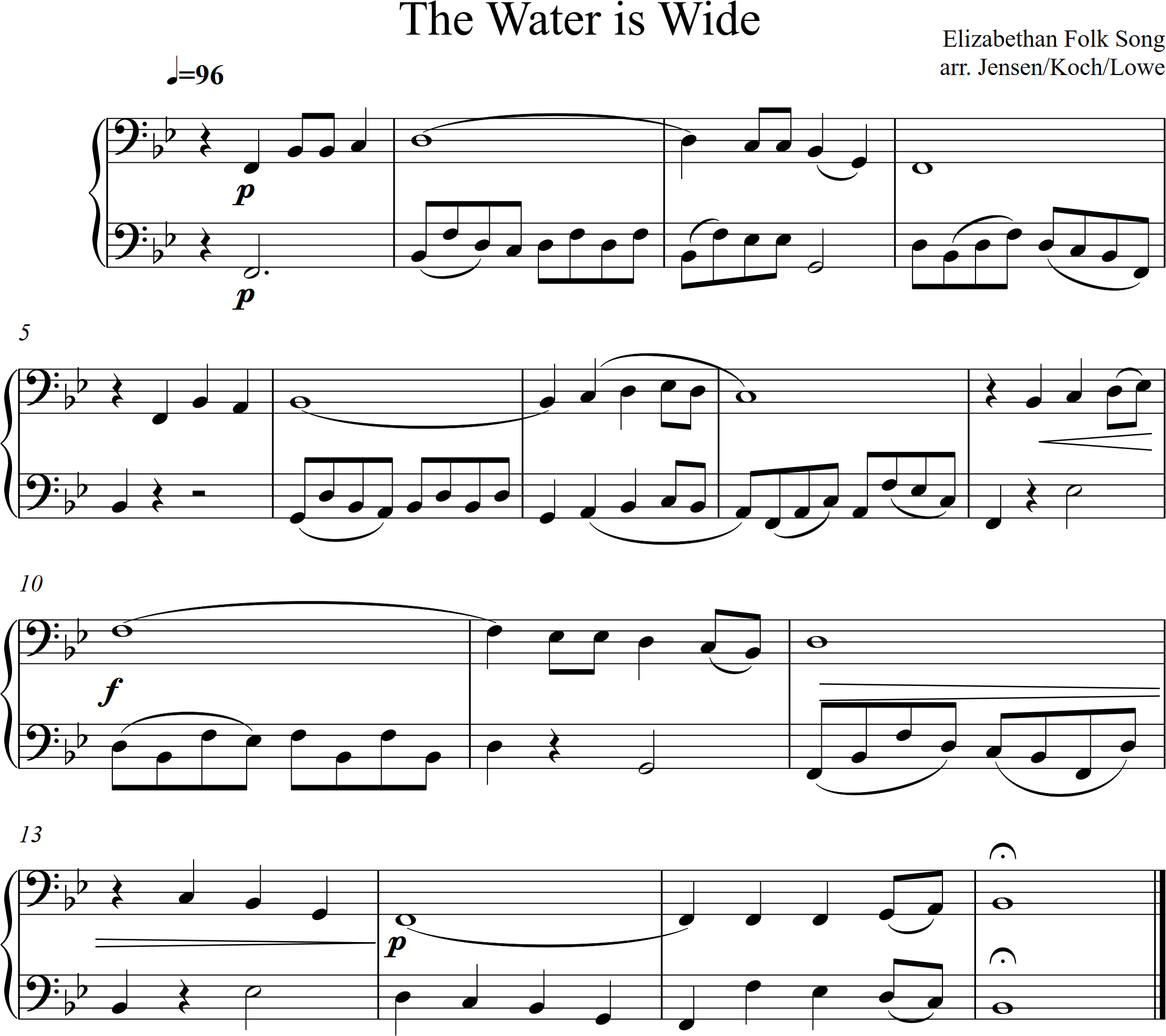


Feedback/Errata